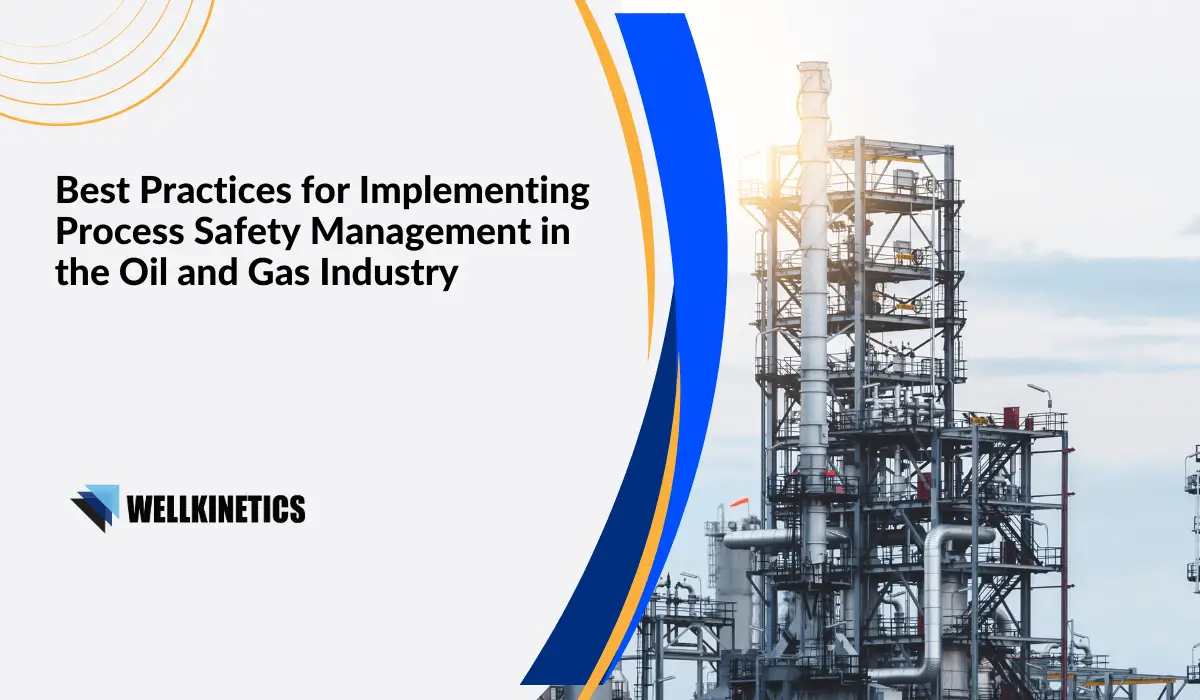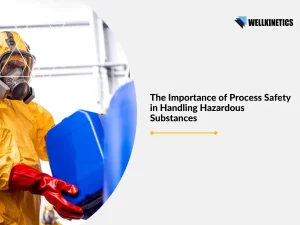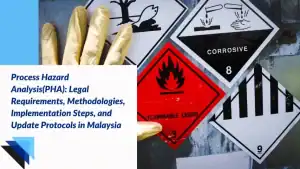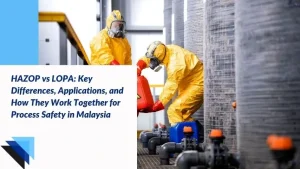In the oil and gas industry, process safety management is not just a mere regulation—it’s a matter of life and death. Ensuring a safe and compliant work environment is paramount to protecting workers, minimizing risks, and preventing catastrophic accidents. However, with the complex nature of the industry, implementing effective process safety management practices can be a daunting task. That’s where this article comes in.
Are you ready to take your safety standards to the next level? keep reading as we dive into the best practices for implementing process safety management in the oil and gas sector.
Introduction to Process Safety Management in the Oil and Gas Industry
Process safety management is a critical aspect of maintaining a safe and compliant work environment in the oil and gas industry. It involves the identification, evaluation, and mitigation of risks associated with various processes and operations in this high-risk sector.
The primary objective of process safety management is to prevent major accidents, protect employees and the environment, and ensure the continuity of operations. It encompasses a comprehensive approach that focuses on hazard analysis, safe design and operations considerations, and a commitment to process safety.
In the oil and gas industry, where complex operations, remote locations, and hazardous substances are involved, process safety management is of utmost importance. It helps control and minimize the risks inherent in activities such as drilling, refining, transportation, and storage of oil and gas.
By implementing robust process safety management systems, companies can effectively identify and prioritize risks, implement necessary control measures, and continuously monitor and improve safety performance. This ensures the protection of personnel, assets, and the surrounding communities.
In the following sections, we will dive deeper into the hazards specific to the oil and gas industry, explore the key elements of process safety management, and discuss best practices for its successful implementation.
RELATED: Understanding Process Safety Management (PSM) – Elements, Requirements & More
Ensure the safety of your operations
Reach out to Wellkinetics for expert process safety management solutions that protect your workforce and environment
Understanding the Hazards in the Oil and Gas Industry
The oil and gas industry plays a crucial role in meeting the world’s energy demands. However, it is also an industry that is inherently hazardous due to the complex processes involved, which can pose safety risks to the health and safety of workers and the environment. Understanding the hazards associated with the oil and gas industry is of utmost importance in order to effectively implement process safety management and mitigate these risks.
Health Hazards:
1. Exposure to hazardous substances: Workers in the oil and gas industry may come into contact with various hazardous substances such as toxic chemicals, gases, and volatile organic compounds. Prolonged exposure to these substances can lead to respiratory issues, skin problems, and other health complications.
2. Physical hazards: The nature of the work in the oil and gas industry involves handling heavy machinery, hot surfaces, and high-pressure equipment. This poses a risk of physical injuries, including fractures, burns, and cuts.
Safety Hazards:
1. Fire and explosion risks: The presence of flammable substances, such as crude oil and natural gas, increases the risk of fires and explosions. Accidental ignition can occur due to equipment failure, improper handling of combustible materials, or electrical malfunctions.
2. Slips, trips, and falls: Oil and gas facilities often have complex infrastructure with platforms, walkways, and stairs. Poor housekeeping, slippery surfaces, and inadequate lighting can contribute to accidents resulting in slips, trips, and falls.
Environmental Hazards:
1. Oil spills: Accidental oil spills can have severe environmental consequences, polluting water bodies and harming marine life. Spills can occur during transportation, storage, or drilling operations.
2. Air pollution: The extraction, processing, and combustion of fossil fuels release pollutants into the air, contributing to global warming and poor air quality.
To effectively address these hazards in the oil and gas industry, implementing risk assessments and process safety management is essential. By identifying potential risks and implementing appropriate control measures, companies can ensure the safety of their workers and protect the environment. Through a comprehensive understanding of the hazards involved, the industry can continuously strive to improve overall safety performance and minimize accidents.
RELATED: Understanding Process Hazards and How to Effectively Address Them
Key Elements of Process Safety Management
Process safety management is a comprehensive approach that aims to prevent major accidents, ensuring the safety of workers and the environment in the oil and gas industry. It involves several key elements that are crucial for effective implementation. Understanding these components is essential for companies operating in the sector.
1. Hazard Analysis
Hazard analysis is a fundamental step in process safety management. It involves the identification and assessment of potential hazards associated with various operations and processes. By conducting a thorough hazard analysis, companies can gain insights into the risks involved and develop strategies to mitigate them. This analysis should encompass all aspects of the operation, including equipment, chemicals, and procedures.
2. Safe Design and Operations Consideration
Safe design and operations consideration involve implementing measures that minimize risks and ensure the safety of personnel and the facility. This includes utilizing engineering controls, such as implementing safety systems, selecting appropriate materials, and following recognized industry standards. Additionally, operational procedures and protocols must be developed and followed to maintain safe and efficient operations.
3. Commitment to Process Safety
A company’s commitment to process safety is vital for successful implementation. This involves establishing a strong safety culture within the organization, where safety is a top priority at all levels. Management must provide the necessary resources, training, and support to ensure that process safety measures are effectively implemented and maintained. Regular audits and inspections can help ensure ongoing adherence to safety standards.
4. Employee Participation and Training
Employee participation and training are critical for the effective implementation of process safety management. Employees should be well-trained in identifying hazards, understanding safe work practices, and utilizing personal protective equipment. Regular training sessions and drills are essential to keep employees up to date with safety procedures and foster a proactive safety culture.
By incorporating these key elements into their approach, companies can significantly reduce the risks associated with operations in the oil and gas industry. It is crucial to continually evaluate and improve process safety management systems to adapt to changes within the industry and emerging best practices.
Remember, the effective implementation of process safety management is a continuous process that requires ongoing monitoring, evaluation, and improvement. Companies that prioritize process safety and invest in the necessary resources and training will greatly enhance their ability to prevent accidents and protect their workforce and the environment.
Implementing Process Safety Management
Implementing process safety management in the oil and gas industry is essential to ensure a safe and compliant work environment. By following best practices and strategies, companies can minimize risks and prevent major accidents. Here are some insights and recommendations for effectively implementing process safety management in the oil and gas sector:
1. Conduct a Process Design Analysis
Before implementing process safety management, it is crucial to analyze the design of your processes. Identify potential hazards and risks associated with each step of the production cycle. This analysis will help you understand the specific areas that require attention and establish guidelines to mitigate potential risks.
2. Emphasize Safe Design and Operations Considerations
Safety should be a top priority when designing and operating processes in the oil and gas industry. Ensure that your facilities are equipped with safety devices, alarms, and controls to detect and respond to potential hazards. Implement strict procedures for handling hazardous materials and provide comprehensive training to all employees.
3. Promote a Culture of Safety
Creating a culture of safety is crucial for the successful implementation of process safety management. Involve all employees in safety initiatives and encourage open communication about potential risks and concerns. Regularly conduct safety training programs and drills to ensure that everyone understands their roles and responsibilities in maintaining a safe work environment.
4. Continuously Monitor and Improve
Process safety management is an ongoing effort. Regularly monitor your processes, systems, and safety measures to identify areas for improvement. Regular inspections, audits, and reviews can help you identify any gaps or deficiencies in your safety protocols. Implement corrective actions promptly to prevent any potential incidents.
5. Engage with Industry Experts and Peers
Staying informed about industry developments and best practices is essential for effective process safety management. Network with experts in the field, attend conferences, and participate in industry forums. Learning from the experiences of others can provide valuable insights and help you enhance your safety practices.
6. Seek Assistance from Professional Consultants
If you are unsure about how to implement process safety management or need additional expertise, consider engaging professional consultants who specialize in process safety. These experts can provide valuable guidance, conduct assessments, and help you develop and implement effective safety strategies.
Remember, the successful implementation of process safety management not only protects the well-being of your employees and the environment but also ensures compliance with legal and regulatory requirements. By following these best practices, you can create a safe and secure work environment in the oil and gas industry.
ALSO READ: HAZOP in Oil and Gas Industry: How to Prepare, Conduct, and Improve Safety in Malaysia
Legal and Regulatory Requirements
Ensuring compliance with legal and regulatory requirements is essential for effective process safety management in the oil and gas industry. These requirements are put in place to mitigate risks, protect workers, and safeguard the environment. Here are some key aspects to consider:
1. Local Regulations and Standards
Oil and gas operations are subject to local regulations and standards that vary between regions and countries. It is crucial to have a thorough understanding of these regulations and standards specific to the location where operations are conducted. This includes requirements related to occupational safety, environmental protection, and emergency response.
2. Industry-Specific Regulations
In addition to local regulations, the oil and gas industry is governed by industry-specific regulations. These regulations address safety measures, equipment standards, and operational guidelines to prevent accidents and promote safe operations. Familiarize yourself with industry codes and standards such as API, NFPA, and OSHA to ensure compliance.
3. Compliance Management Systems
Implementing a robust compliance management system is essential for meeting legal and regulatory requirements. This system should include protocols for documentation, audits, inspections, and incident reporting. It is important to continuously monitor changes in regulations and update your compliance management system accordingly.
4. Training and Certification
Compliance with legal and regulatory requirements can be facilitated through adequate training and certification programs. Ensure that personnel involved in process safety management receive appropriate training on relevant regulations, safety procedures, and emergency response protocols. Certification programs can help validate the competency and qualifications of individuals responsible for safety management.
Remember, staying up to date with legal and regulatory requirements is crucial for maintaining a safe work environment and preventing potential safety issues in the oil and gas industry. Compliance should be a top priority in all aspects of process safety management.
How Wellkinetics can help
With our expertise in process safety management, Wellkinetics can assist you in ensuring the highest level of safety in your oil and gas operations. Our team of experienced professionals specializes in helping companies design and implement effective safety strategies that align with legal and regulatory requirements.
Our services include:
1. Comprehensive PSM Consultation & Implementation Support
Whether your organization is initiating its Process Safety Management (PSM) journey or seeking structured implementation, we provide expert guidance to establish a strong foundation for a sustainable PSM program.
2. Audits & Health Checks of Existing PSM Programs
Our specialists conduct thorough assessments of your existing PSM framework, evaluating key process safety elements and procedures such as Management of Change (MOC) and Safety Critical Equipment Management to identify gaps and recommend enhancements.
3. Targeted Process Safety Training Services
We offer structured training programs designed to enhance the competency of personnel in managing process safety effectively. Courses include PSM Awareness, Process Safety Risk Management (PSRM), and Pre-Startup Safety Review (PSSR), ensuring staff are well-equipped to uphold safety standards.
4. Process Work Process & Procedure Enhancement
Our experts conduct in-depth evaluations of specific process safety work processes and procedures, benchmarking them against industry best practices to optimize safety performance and operational efficiency.
5. Facilitation of Key Process Safety Sessions
Wellkinetics facilitates essential process safety workshops and studies, including HAZOP, Bowtie Analysis, and Accident Investigations, providing structured methodologies to identify and mitigate hazards effectively.
6. Delivery of Specialized Process Safety Workscopes
We assist in the execution of specialized process safety-related workscopes, such as CIMAH Report preparation, ensuring compliance with safety regulations and enhancing risk management strategies.
By partnering with Wellkinetics, you gain access to industry-leading expertise, ensuring that your oil and gas operations not only comply with regulatory standards but also foster a proactive and resilient safety culture.
Learn more about our Process Safety Consulting Services.




